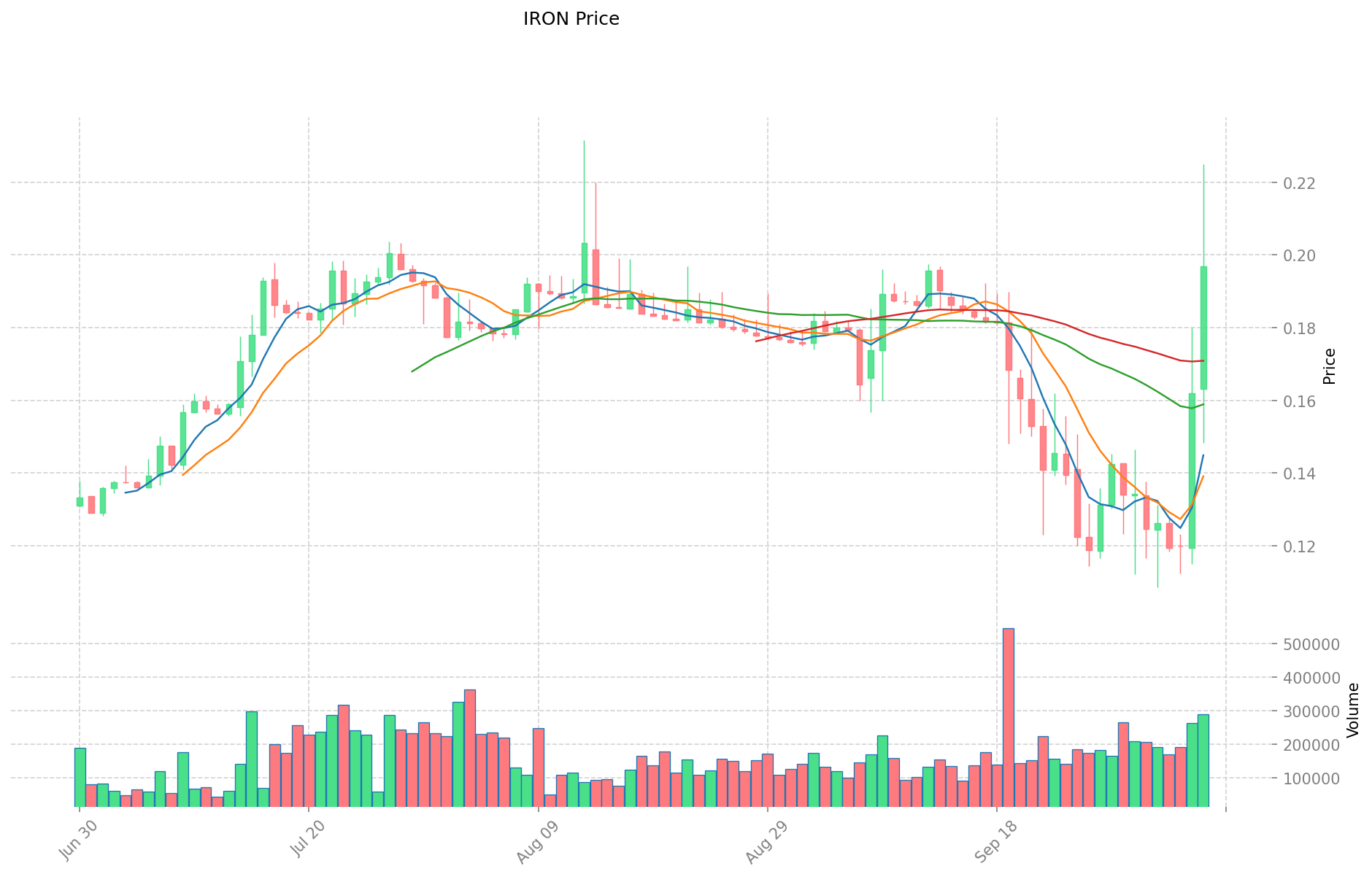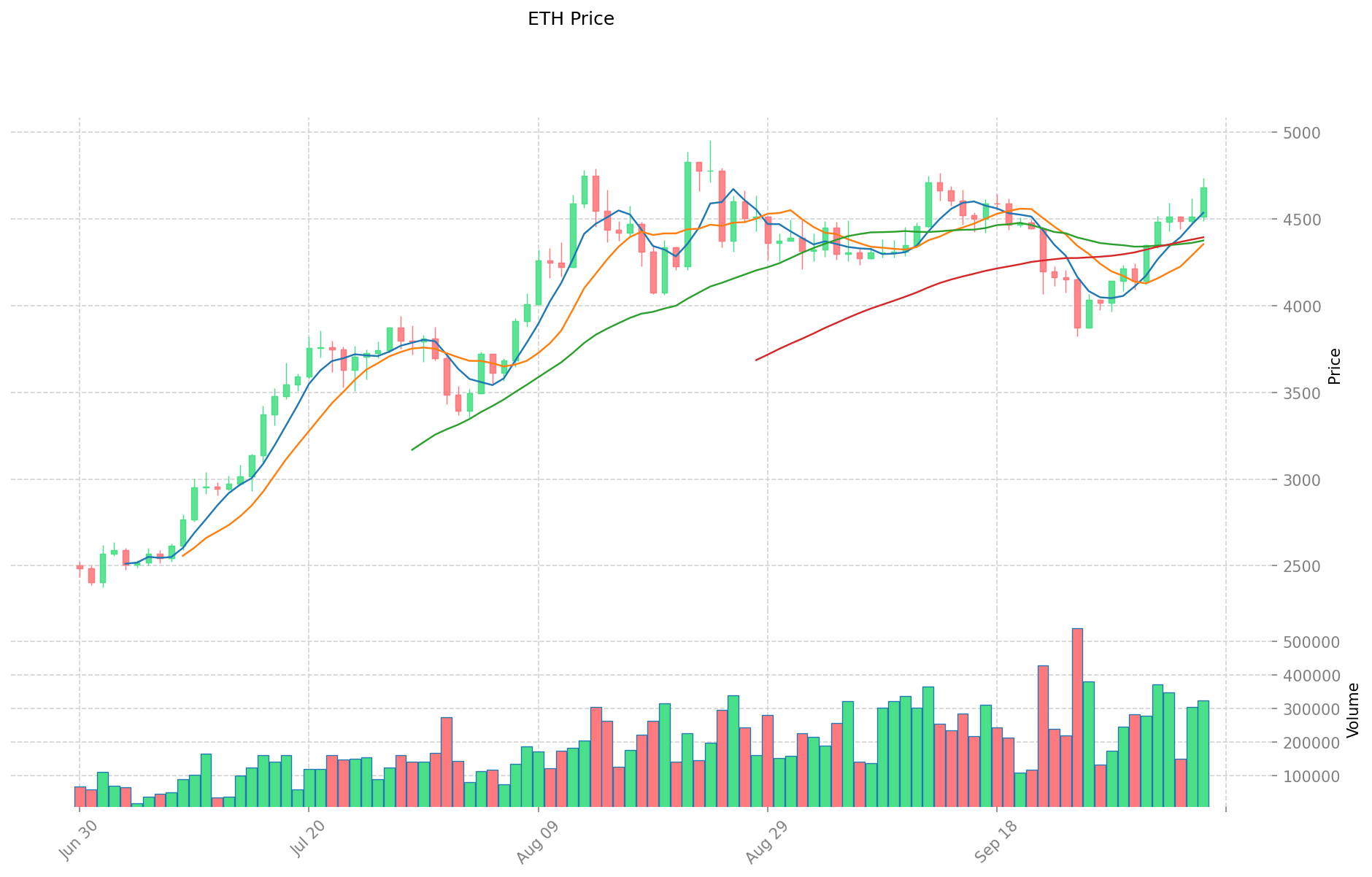IRON vs ETH: A Comparative Analysis of Two Digital Assets in the Evolving Cryptocurrency Ecosystem
Introduction: IRON vs ETH Investment Comparison
In the cryptocurrency market, IRON vs ETH comparison remains a topic investors can't ignore. The two not only differ significantly in market cap ranking, application scenarios, and price performance, but also represent different positions in the crypto asset landscape.
Iron Fish (IRON): Launched as a decentralized, proof of work (PoW) based blockchain project, it has gained market recognition for its strong privacy guarantees for every transaction.
Ethereum (ETH): Since its inception in 2015, it has been hailed as the foundation for decentralized applications and smart contracts, becoming one of the most traded and highest market cap cryptocurrencies globally.
This article will comprehensively analyze the investment value comparison between IRON and ETH, focusing on historical price trends, supply mechanisms, institutional adoption, technological ecosystems, and future predictions, attempting to answer the question investors care about most:
"Which is the better buy right now?"
I. Price History Comparison and Current Market Status
Iron Fish (IRON) and Ethereum (ETH) Historical Price Trends
- 2023: IRON reached its all-time high of $23.5 on April 25, 2023.
- 2025: ETH hit a new all-time high of $4,946.05 on August 25, 2025.
- Comparative Analysis: In the recent market cycle, IRON dropped from its peak of $23.5 to a low of $0.0784, while ETH demonstrated more stability and growth, reaching new highs.
Current Market Situation (2025-10-07)
- IRON current price: $0.1968
- ETH current price: $4674.78
- 24-hour trading volume: IRON $50,644.33 vs ETH $1,480,657,291.92
- Market Sentiment Index (Fear & Greed Index): 70 (Greed)
Click to view real-time prices:
- Check IRON's current price Market Price
- Check ETH's current price Market Price


II. Core Factors Affecting IRON vs ETH Investment Value
Supply Mechanism Comparison (Tokenomics)
- IRON: Algorithmic stablecoin system with dual-token structure - IRON (stablecoin) and TITAN (collateral token)
- ETH: Profit-generating blockchain with annual profits of $2.7 billion, P/E ratio of 98
- 📌 Historical pattern: TITAN price collapsed from $65 to nearly zero in June 2021, causing IRON to depeg during a bank run scenario
Institutional Adoption and Market Applications
- Institutional holdings: ETH appears more established with financial metrics being compared to traditional tech companies like Amazon (P/E 75) and Zoom (P/E 153)
- Enterprise adoption: IRON functions primarily as a stablecoin within payment systems, while ETH serves as infrastructure for broader applications
- National policies: Regulatory frameworks for stablecoins becoming increasingly important for IRON-type tokens
Technology Development and Ecosystem Building
- IRON technology: Based on Frax code, operates on Polygon network with a dual-token system
- ETH technology: Described as "the only profitable chain" with extensive ecosystem development
- Ecosystem comparison: ETH has widespread applications across DeFi, while IRON's value proposition focuses on stability mechanisms for payments
Macroeconomic Factors and Market Cycles
- Inflation environment performance: IRON designed to maintain stable value, while ETH's value fluctuates based on market demand
- Macroeconomic policy impact: Stablecoins like IRON are becoming alternatives to traditional payment networks due to infrastructure limitations and high fees
- Geopolitical factors: Stablecoins are revolutionizing cross-border value flows, business transaction paradigms, and individual access to financial services
III. 2025-2030 Price Prediction: IRON vs ETH
Short-term Prediction (2025)
- IRON: Conservative $0.12-$0.20 | Optimistic $0.20-$0.25
- ETH: Conservative $2,526-$4,679 | Optimistic $4,679-$6,738
Mid-term Prediction (2027)
- IRON may enter a growth phase, with estimated prices ranging from $0.23 to $0.32
- ETH may enter a bullish market, with estimated prices ranging from $3,783 to $7,911
- Key drivers: Institutional capital inflow, ETF, ecosystem development
Long-term Prediction (2030)
- IRON: Base scenario $0.27-$0.39 | Optimistic scenario $0.39-$0.41
- ETH: Base scenario $7,285-$10,118 | Optimistic scenario $10,118-$10,523
Disclaimer
IRON:
| 年份 | 预测最高价 | 预测平均价格 | 预测最低价 | 涨跌幅 |
|---|---|---|---|---|
| 2025 | 0.202498 | 0.1966 | 0.119926 | 0 |
| 2026 | 0.29732801 | 0.199549 | 0.13369783 | 1 |
| 2027 | 0.3180012864 | 0.248438505 | 0.22607903955 | 26 |
| 2028 | 0.337031675883 | 0.2832198957 | 0.152938743678 | 43 |
| 2029 | 0.462087420829335 | 0.3101257857915 | 0.226391823627795 | 57 |
| 2030 | 0.405411933475938 | 0.386106603310417 | 0.270274622317292 | 96 |
ETH:
| 年份 | 预测最高价 | 预测平均价格 | 预测最低价 | 涨跌幅 |
|---|---|---|---|---|
| 2025 | 6738.0624 | 4679.21 | 2526.7734 | 0 |
| 2026 | 8049.177042 | 5708.6362 | 4623.995322 | 22 |
| 2027 | 7910.74261415 | 6878.906621 | 3783.39864155 | 47 |
| 2028 | 9539.32375667175 | 7394.824617575 | 5546.11846318125 | 58 |
| 2029 | 11769.23312010149125 | 8467.074187123375 | 6604.3178659562325 | 81 |
| 2030 | 10522.87979975693045 | 10118.153653612433125 | 7285.07063060095185 | 116 |
IV. Investment Strategy Comparison: IRON vs ETH
Long-term vs Short-term Investment Strategies
- IRON: Suitable for investors focused on payment scenarios and stablecoin ecosystems
- ETH: Suitable for investors seeking long-term growth potential and ecosystem development
Risk Management and Asset Allocation
- Conservative investors: IRON: 20% vs ETH: 80%
- Aggressive investors: IRON: 40% vs ETH: 60%
- Hedging tools: Stablecoin allocation, options, cross-currency portfolios
V. Potential Risk Comparison
Market Risks
- IRON: Vulnerability to depegging events and market sentiment shifts
- ETH: Higher volatility and susceptibility to broader crypto market trends
Technical Risks
- IRON: Scalability, network stability, potential vulnerabilities in stablecoin mechanism
- ETH: Network congestion, gas fee fluctuations, transition risks with upgrades
Regulatory Risks
- Global regulatory policies may have differing impacts on stablecoins (IRON) and smart contract platforms (ETH)
VI. Conclusion: Which Is the Better Buy?
📌 Investment Value Summary:
- IRON advantages: Stable value proposition, potential for payment system integration
- ETH advantages: Established ecosystem, institutional adoption, potential for long-term growth
✅ Investment Advice:
- New investors: Consider a conservative allocation favoring ETH due to its established market position
- Experienced investors: Balanced portfolio with both IRON and ETH, adjusting based on market conditions
- Institutional investors: Strategic allocation to ETH for long-term blockchain exposure, IRON for stablecoin market participation
⚠️ Risk Warning: The cryptocurrency market is highly volatile. This article does not constitute investment advice. None
VII. FAQ
Q1: What are the main differences between IRON and ETH? A: IRON is a stablecoin designed to maintain a stable value, while ETH is the native cryptocurrency of the Ethereum blockchain, used for various applications and smart contracts. IRON operates on a dual-token system, while ETH serves as the foundation for a vast ecosystem of decentralized applications.
Q2: Which cryptocurrency has shown better price performance recently? A: Based on the provided data, ETH has demonstrated better price performance and stability. While IRON dropped from its peak of $23.5 to $0.1968, ETH reached a new all-time high of $4,946.05 in 2025 and is currently trading at $4674.78.
Q3: How do the supply mechanisms of IRON and ETH differ? A: IRON uses an algorithmic stablecoin system with a dual-token structure (IRON and TITAN), while ETH operates on a profit-generating blockchain with an annual profit of $2.7 billion and a P/E ratio of 98.
Q4: What are the key factors affecting the investment value of IRON and ETH? A: Key factors include supply mechanisms, institutional adoption, market applications, technology development, ecosystem building, macroeconomic factors, and market cycles.
Q5: What are the long-term price predictions for IRON and ETH by 2030? A: For IRON, the base scenario predicts $0.27-$0.39, with an optimistic scenario of $0.39-$0.41. For ETH, the base scenario predicts $7,285-$10,118, with an optimistic scenario of $10,118-$10,523.
Q6: How should investors allocate their portfolio between IRON and ETH? A: Conservative investors might consider allocating 20% to IRON and 80% to ETH, while aggressive investors might opt for 40% IRON and 60% ETH. However, individual allocations should be based on personal risk tolerance and investment goals.
Q7: What are the main risks associated with investing in IRON and ETH? A: IRON risks include vulnerability to depegging events and market sentiment shifts, while ETH risks include higher volatility and susceptibility to broader crypto market trends. Both face technical and regulatory risks, with IRON particularly sensitive to stablecoin regulations.
Share
Content